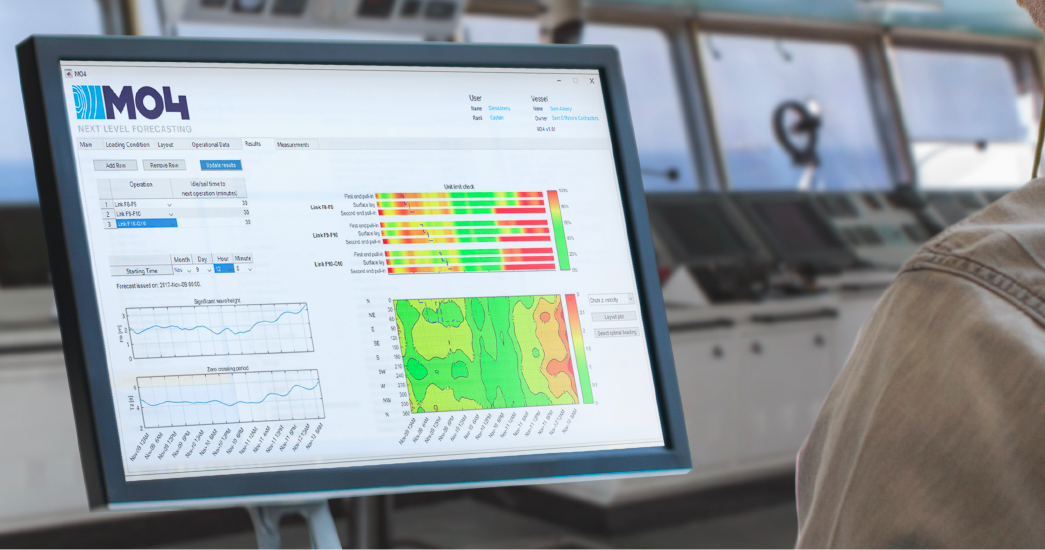Notified bodies still use significant wave height (Hs) and peak period (Tp) for setting limits when working offshore, but is this still the most reliable way to go? Mocean Forecast, based in Amsterdam, begs to differ and offers forecasting software that gives a go or no-go for offshore operations.
Just after World War II, Walter Munks’ research produced the terminology Hs and set a frame of reference for sea states. There were no engineering tools, models and measurement data when this method was developed, but it is still being used today.
According to Mocean Forecast, it is not the most accurate option available. Despite a certain Hs and Tp, it may feel completely different day to day even on board the same vessel. That is why the company came up with MO4, software that specialises in forecasting vessel motions using raw weather forecast data instead of the simplified Hs and Tp format.
Green or Red Light
Jelte Kymmel, General Manager at Mocean Forecast: ‘As a result we are able to predict with more accuracy whether an offshore operation can be executed or not. We can even indicate what risk level is associated with operations planned. In short, the MO4 software will give you the available weather windows to optimise and execute offshore operations by a simple green or red light. No more interpretation of Hs/Tp sea states, which are far from reality. This will be a big leap forward for the industry.’
Higher Workability
In September 2018, MO4 obtained the “Technology Verification Letter” of DNVGL, thereby approving use of the software as a decision support tool. On the MO4 website, Kemmel stated at the time that the extensive review to gain approval by DNV GL revealed that ‘the safety factors on the weather forecast […] are some ten to twenty per cent more favourable. This directly results in ten to twenty per cent higher allowable weather conditions. For a typical North Sea operation, this implies a sixteen to 24 per cent higher workability. This apart from any gain in workability due to the higher accuracy of the forecast.’
MO4 Platform
The MO4 on-board platform is installed on the vessel bridge. It accurately and clearly shows how the varying weather will impact a trip or operation. The software uses a state-of-the-art ship motion algorithm combined with a detailed weather forecast, to generate a forecast of the ship’s motions. The forecasted motions are presented in an intuitive and simple way, to aid the crew of the vessel to make decisions based on the best available data. Motion sensors are used to provide confidence in the forecasts.
The system can be used to predict vessel motions during personnel transfer, station keeping, heavy lift operations, decommissioning operations, survey operations, jack-up operations and more.
MO4 was developed in cooperation with Siri Marine and Mocean Offshore, who together formed the joint venture Ocean Forecast. Siri Marine has developed the integrated motion monitoring feedback system, while Mocean Offshore provides the needed hydrodynamic databases. Weather data is usually supplied by BOC MetOcean, but other data suppliers can also be connected to the software. Development of the MO4 suite wasn supported by the Dutch province of Noord-Holland.








